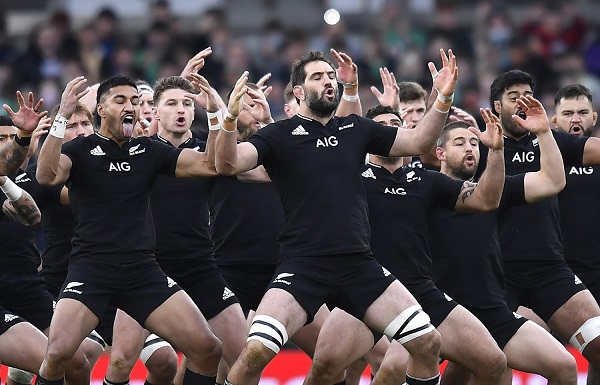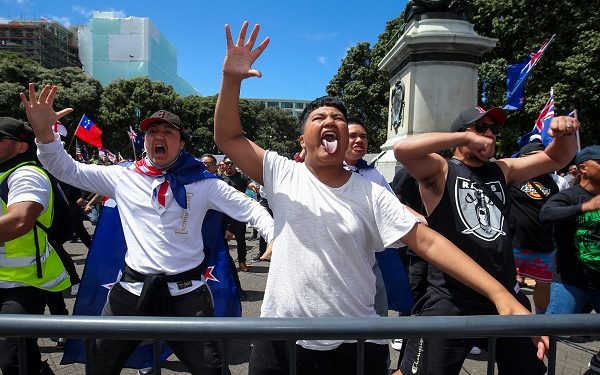Anti-vaccine protesters in New Zealand using the ‘Ka Mate’ haka to illustrate their defiance to the newly imposed vaccine mandate and pandemic restrictions.
New Zealand has struggled to combat the Delta variant of the coronavirus, and the Maori population in particular has so far proved less receptive to getting the vaccine.
As of November 15, New Zealand Ministry of Health figures showed roughly 77 per cent of the Maori population have received their first vaccine dose, but the second-dose percentage is only around 61 per cent.
Those numbers are in contrast to the country’s total eligible population (those aged 12 and over), where around 90 per cent have had their first jab and a little more than 81 per cent have received the second.
Te Rauparaha, the former chief of the Ngati Toa tribe, is believed to have composed the ‘Ka Mate’ haka around 1820, which has since been popularised by New Zealand’s national rugby union team.

But despite its rise in use at protests across the country in recent weeks, the Ngati Toa said it “condemns the use of the Ka Mate haka to push and promote anti-Covid-19-vaccination messages.”
“We do not support their position and we do not want our tupuna or our iwi associated with their messages,” said the tribe’s chief executive, Helmut Modlik, in a statement.
“Our message to protesters who wish to use Ka Mate is to use a different haka. We do not endorse the use of Ka Mate for this purpose.”
Modlik also explained how many of the tribe’s ancestors lost their lives in previous pandemics,” highlighting Ngati Toa’s stance that a vaccine is “the best protection we have available to us.”
There’s a concern that the haka’s promotion as an anti-vaccine symbol may further discourage young Maori from receiving the vaccine.
New Zealand has recorded a little more than 9,000 cases of Covid-19 as of November 16 and only 35 deaths, one of the lowest totals in the world.

